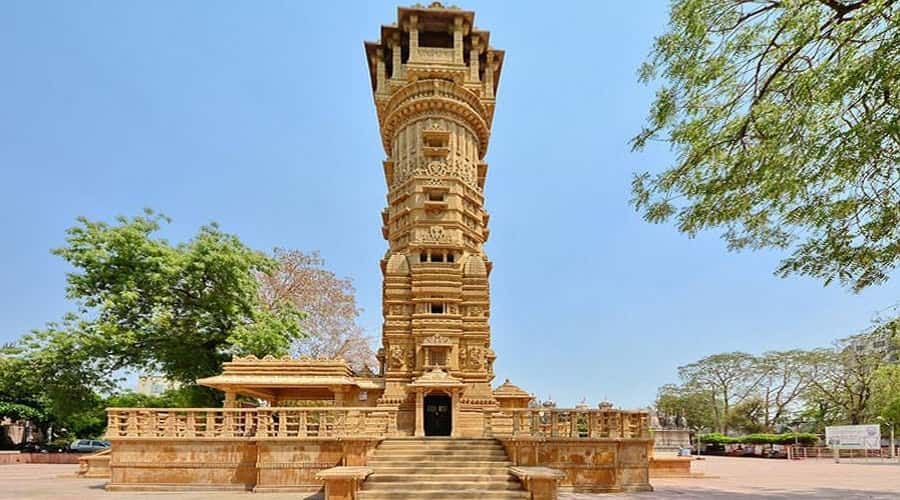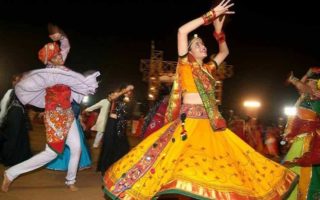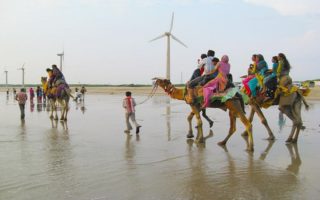Founded in 1620 by Thakore Sahib Vibhoji Ajoji Jadeja of Jadeja clan, Rajkot, was ruled by Mohammad Ghazni and Muzaffarid dynasty before the Jadejas. The Jadeja of Nawanagar got defeated in the battle against the Mughals. Thakore Sahib became a prisoner and came under the care of Jodhaji Soda, who was Akbar’s wife’s brother and Thakore’s uncle. History has it that he received land for his services with the Mughals, which he converted with the help of Raju Sandhi to the city of Rajkot. After this, Thakores successor suppressed the Kathy tribes and strengthened Rajkot by adding villages by the 17th century.
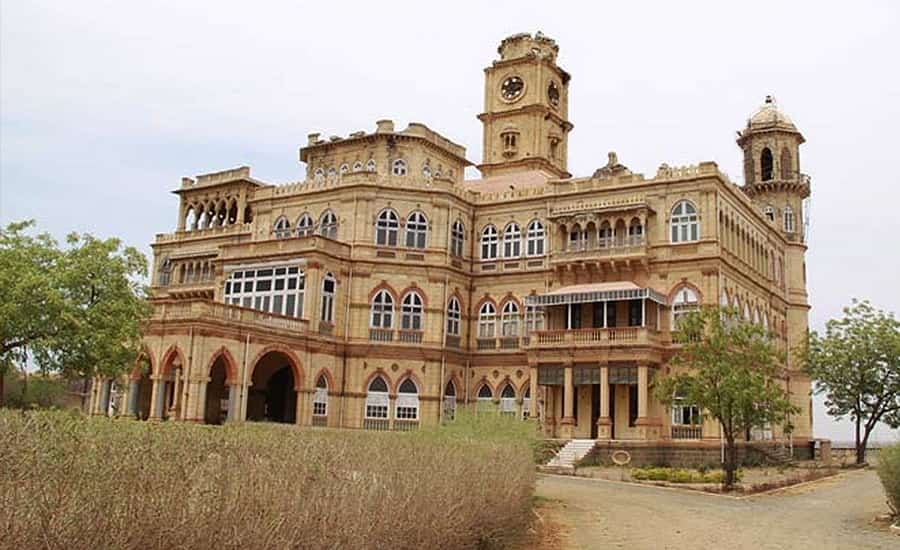
Rajkot was renamed Masumabad and a fortress was built. There was a deep moat, which no longer exists now. There were 8 gates to Masumabad. Masumabad was conquered by Thakore Sahib Ranmalji Mehramanji in 1732 and the name Rajkot was restored. In 1818, the Thakores accepted British protection till India got independence and Rajkot was incorporated with Gujarat when the State was formed in 1960.
Rajkot – Down the Ages
After Independence, Rajkot, the capital of Saurashtra was merged with the Bombay State in 1956. Later when the State of Gujarat was formed, Rajkot became a part of Gujarat. Thakore Sahib Pradyumnasinhji died in 1973 and his son Mr. Manoharsinhji Pradyumansinhji was the Member of the Gujarat Legislative Assembly for many years. Down the ages, Rajkot progressed into a successful town and became the centre of activities. However, the 2001 earthquake near Bhuj struck the city and affected it greatly. Today, Rajkot is known as the town where Mahatma Gandhi lived most of his early years and there is a home exhibiting his belongings.
Rajkot – A Rendezvous
Rajkot, the largest Saurashtrians city is a peaceful place and a very important part of Gujarat. With its impressive structures and elegant constructions, this city is famous for its non-violent status. This is one of the important centers of India where the principle of non-violence was propagated. This city has been famous for this from the time India was fighting for its independence. The ambience and the atmosphere here is famous for its wonderfully crafted textiles. Offering the best kind of cuisine with its sour and sweet tinge, this city ranked the 26th largest Indian city is slowly in a transit period for progressing, culturally, industrially and economically.
Rajkot -Travel kitty
Any place would be an ideal travel kitty if the tourist is benefitted with the best kind of ambience, atmosphere and the right things to see. Rajkot has a beautiful museum with all the architecture of colonial times. Added to this there are handicrafts like textiles and silver work which are the main features of Rajkot. There is also a National weaving institute, which promotes traditional weaves. This is the ideal travel kitty for the tourists visiting this place.
Places to Visit in Rajkot
Rajkot, the centre of the historical Saurashtrians is a place that helps one to understand Mahatma Gandhi’s life well. Rajkot, the fourth largest city in Gujarat provides the best to the tourist in terms of social and cultural aspects. Politically standing as the centre of non-violent activities during the freedom movement, the city has gained popularity in the minds of the Indians. The joie de vivre here is more for many Indian tourists because they related this place with Mahatma Gandhi and that fills them with pleasure. One can find the following places here:
Homes, Mansions and Museums
Kaba Gandhi No Delo
This is Gandhiji’s ancestral home. It has the Gandhi Smriti. This is a permanent exhibition on Gandhi’s life, activities and things.
Watson Museum and Library
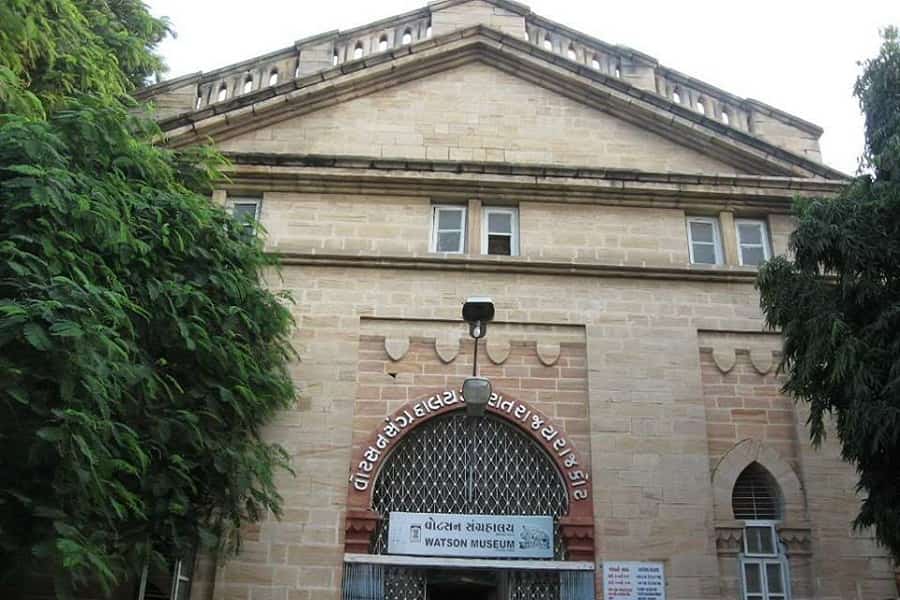
This is found in the Jubilee Garden. The museum introduces the visitor to the culture and the heritage value of Saurashtra. It was found in 1888 and was mainly found for preserving objects of value. Today it is one of the largest and the most educative museum in Gujarat. It has invaluable stuff and lot of facilities like photography, libraries etc.
- Must Read: Historical Places in Gujarat
Rajkumar College
This has been built in 1870 and has an important effect on the city. The city was sometimes known as the city that had the Rajkumar College. It was primarily built for educating the princes of the Indian State and the chiefs of Kathiawar.
Rashtriya Shala
This is a centre, which is famous for the weaving of the “Patola”. It was founded by Mahatma Gandhi. When Mahatma Gandhi was imbibing the policy of non-violence, the country got inspired by this. In 1921, Rashtriya Shala was set up and started functioning. Today it has activities for the children, adolescents, cultural activities, reading facilities, religious training, and production of khadi, operation of the charkha or the spinning wheel, and weaving of the Patola silk are the main activities here. Besides, pure linseed oil is extracted here, and is in great demand. There is a room where Gandhi fasted during the Civil Disobedience Movement. This has been preserved as a National monument. Thus, the Rashtriya Shala started as a single structure but today has bifurcated with a number of offshoots. Rightly, it is the mother of all activities in Rajkot and is a much-revered monument.
Gates
Rajkot, earlier known as Masumabad had eight gates leading into the city. The Gates were studded with iron spikes for the sake of security. These gates were the Kotharia Naka, Rajya Naka, Bedi Naka, Bhichari Naka, Sardhar Naka, Pal no Darwajo. There was the Khadaki Naka near Naklank temple. The fort is in ruins and the debris of the fort is still seen.
Temple
Jagat Mandir
This is built of red stones. There is a beautifully carved temple built for Sri Ramakrishna Paramhans. Lord Krishna is the presiding deity here and is known as Dwarkadhish. The temple has a shrine, which is erected on 60 pillars made of sandstone and granite. The temple is 170 feet high. There is a flag in the temple, which is replaced thrice in a day. This is believed to have been constructed 2500 years ago.
Lake
Lal Pari Lake
This is a beautiful spot for picnics. It is around 5 kms from Rajkot. This exotic nature’s gift is also a famous spot for bird watching. There is a variety of birds found here. Birds like the black tailed godwit, rosy pastor, and Pheasant-tailed jacana, purple moorhen, wigeon, common teal and the pelican and spoonbill are found here.
Dams
Ajit Dam
It is around 8 kms from Rajkot. It supplies water to the whole of Rajkot.
City
Wankaner
This town around 50 kms from Rajkot is a Heritage hotel now. It is built on top of a hill on the banks of the River Machchhu. It was built by Maharana Raj Saheb in the 20th century. The scenic beauty, the architectural excellence, the recreation facilities and the splendor of the town is a sight to behold.
Thus Rajkot, the cotton centre of India, is a place to visit and take back a lot of nostalgia.
As we leave the city, we think, “Beauty lies within the heart of the city and in the eyes of the tourist.”
